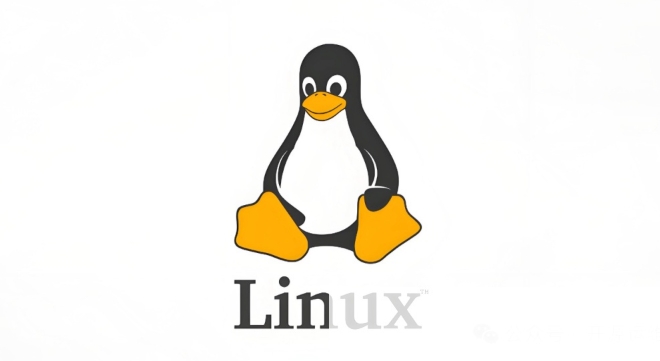Linux file permissions control who can read, write, or execute files, and are managed through chmod and chown commands. 1. File permissions are divided into owner, group and other users. Each type of user has three permissions: read (r), write (w), and execute (x); 2. Use chmod to modify permissions through symbolic mode (such as chmod ux file) or digital mode (such as chmod 644 file); 3. Use chown to change the owner and group of the file (such as chown user:group file), which requires administrator permission; 4. In terms of security, chmod 777 should be avoided. It is recommended to allocate permissions reasonably and modify directory permissions recursively using the -R parameter.

In Linux systems, file permissions control who can read, write, or execute a file. If you need to modify these permissions, you will usually use chmod and chown commands. Understanding and using them correctly can help you manage files and directories more securely.

What are file permissions?
Each file in Linux has three types of user permission settings: owner , group , and other users . Each user has three permissions:
- r(read) : Allows reading file content or listing files in directories.
- w(write) : Allows to modify file content or create/delete files in a directory.
- x(execute) : Allows running files (such as scripts or programs) or entering directories.
You can view the permission settings of the current file through ls -l , for example:

-rw-r--r-- 1 user group 0 Apr 5 10:00 file.txt
This means that the owner can read and write, and groups and others can only read.
How to modify permissions using chmod
The chmod command is used to change access rights to files or directories. There are two common methods: symbolic mode and digital mode.

Symbolic Mode
The syntax is: chmod [用戶][操作符][權限] 文件名
Users can be:
-
u: Owner -
g: Group -
o: Others -
a: Everyone (default)
-
Operator:
-
-: Remove permissions -
=: Set permissions
Example:
chmod ux script.sh # Add execution permissions to the owner chmod go-w file.txt # Remove write permissions from groups and others
Digital Mode
Each permission can be represented by numbers:
-
r= 4,w= 2,x= 1
Combined it is:
-
rw-= 6 (4 2) -
rx= 5 (4 1) -
rwx= 7 (4 2 1)
Common usage:
chmod 644 file.txt # The owner can read and write, others read only chmod 755 directory/ # The owner can be fully controlled, others can read and execute
How to change file owners and groups
Sometimes you need to change the owner or group of the file, and then use the chown command.
Basic syntax:
chown [Options] [User][:Group] File
Common usage:
chown user file.txt # Change owner chown :group file.txt # Change the group to which chown user:group file.txt # Change both owner and group
Note: Ordinary users cannot change the owner of the file at will, and they usually require administrator rights (sudo) to operate.
Safety tips and precautions
- Don't give all users "write" or "execute" permissions easily, especially for system files or configuration files.
- Although it is convenient to use
chmod 777, it is very unrecommended because it allows everyone to modify and execute the file, which poses a security risk. - When modifying directory permissions, adding the
-Rparameter can be recursively applied to all subfiles and subdirectories in the directory:chmod -R 755 mydir/
Basically that's it. By mastering
chmodandchown, you can control the access permissions of the Linux file system well.The above is the detailed content of how to change file permissions in linux. For more information, please follow other related articles on the PHP Chinese website!

Hot AI Tools

Undress AI Tool
Undress images for free

Undresser.AI Undress
AI-powered app for creating realistic nude photos

AI Clothes Remover
Online AI tool for removing clothes from photos.

Clothoff.io
AI clothes remover

Video Face Swap
Swap faces in any video effortlessly with our completely free AI face swap tool!

Hot Article

Hot Tools

Notepad++7.3.1
Easy-to-use and free code editor

SublimeText3 Chinese version
Chinese version, very easy to use

Zend Studio 13.0.1
Powerful PHP integrated development environment

Dreamweaver CS6
Visual web development tools

SublimeText3 Mac version
God-level code editing software (SublimeText3)
 Install LXC (Linux Containers) in RHEL, Rocky & AlmaLinux
Jul 05, 2025 am 09:25 AM
Install LXC (Linux Containers) in RHEL, Rocky & AlmaLinux
Jul 05, 2025 am 09:25 AM
LXD is described as the next-generation container and virtual machine manager that offers an immersive for Linux systems running inside containers or as virtual machines. It provides images for an inordinate number of Linux distributions with support
 How to troubleshoot DNS issues on a Linux machine?
Jul 07, 2025 am 12:35 AM
How to troubleshoot DNS issues on a Linux machine?
Jul 07, 2025 am 12:35 AM
When encountering DNS problems, first check the /etc/resolv.conf file to see if the correct nameserver is configured; secondly, you can manually add public DNS such as 8.8.8.8 for testing; then use nslookup and dig commands to verify whether DNS resolution is normal. If these tools are not installed, you can first install the dnsutils or bind-utils package; then check the systemd-resolved service status and configuration file /etc/systemd/resolved.conf, and set DNS and FallbackDNS as needed and restart the service; finally check the network interface status and firewall rules, confirm that port 53 is not
 How would you debug a server that is slow or has high memory usage?
Jul 06, 2025 am 12:02 AM
How would you debug a server that is slow or has high memory usage?
Jul 06, 2025 am 12:02 AM
If you find that the server is running slowly or the memory usage is too high, you should check the cause before operating. First, you need to check the system resource usage, use top, htop, free-h, iostat, ss-antp and other commands to check CPU, memory, disk I/O and network connections; secondly, analyze specific process problems, and track the behavior of high-occupancy processes through tools such as ps, jstack, strace; then check logs and monitoring data, view OOM records, exception requests, slow queries and other clues; finally, targeted processing is carried out based on common reasons such as memory leaks, connection pool exhaustion, cache failure storms, and timing task conflicts, optimize code logic, set up a timeout retry mechanism, add current limit fuses, and regularly pressure measurement and evaluation resources.
 Install Guacamole for Remote Linux/Windows Access in Ubuntu
Jul 08, 2025 am 09:58 AM
Install Guacamole for Remote Linux/Windows Access in Ubuntu
Jul 08, 2025 am 09:58 AM
As a system administrator, you may find yourself (today or in the future) working in an environment where Windows and Linux coexist. It is no secret that some big companies prefer (or have to) run some of their production services in Windows boxes an
 How to Burn CD/DVD in Linux Using Brasero
Jul 05, 2025 am 09:26 AM
How to Burn CD/DVD in Linux Using Brasero
Jul 05, 2025 am 09:26 AM
Frankly speaking, I cannot recall the last time I used a PC with a CD/DVD drive. This is thanks to the ever-evolving tech industry which has seen optical disks replaced by USB drives and other smaller and compact storage media that offer more storage
 How to find my private and public IP address in Linux?
Jul 09, 2025 am 12:37 AM
How to find my private and public IP address in Linux?
Jul 09, 2025 am 12:37 AM
In Linux systems, 1. Use ipa or hostname-I command to view private IP; 2. Use curlifconfig.me or curlipinfo.io/ip to obtain public IP; 3. The desktop version can view private IP through system settings, and the browser can access specific websites to view public IP; 4. Common commands can be set as aliases for quick call. These methods are simple and practical, suitable for IP viewing needs in different scenarios.
 How to Install NodeJS 14 / 16 & NPM on Rocky Linux 8
Jul 13, 2025 am 09:09 AM
How to Install NodeJS 14 / 16 & NPM on Rocky Linux 8
Jul 13, 2025 am 09:09 AM
Built on Chrome’s V8 engine, Node.JS is an open-source, event-driven JavaScript runtime environment crafted for building scalable applications and backend APIs. NodeJS is known for being lightweight and efficient due to its non-blocking I/O model and
 How to Setup MySQL Replication in RHEL, Rocky and AlmaLinux
Jul 05, 2025 am 09:27 AM
How to Setup MySQL Replication in RHEL, Rocky and AlmaLinux
Jul 05, 2025 am 09:27 AM
Data replication is the process of copying your data across multiple servers to improve data availability and enhance the reliability and performance of an application. In MySQL replication, data is copied from a database from the master server to ot






